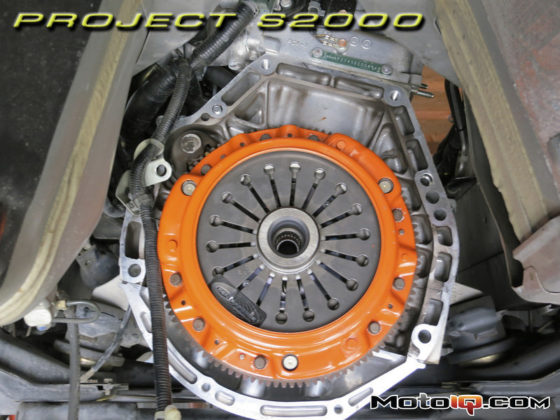,

Here's the Holinger and the adapter plates bolted to one our many mock up VQ35HR blocks. The bump in the Holinger's bell housing for starter clearance can be seen here, but it's for an RB26. The VQ35HR's starter is on the other side so no starter is mounted there. You can also see the provision on the Holinger bell housing to use a factory Nissan push style clutch fork and release bearing.

The adapter plate now mounts the VQ35HR starter in almost the stock VQ location. Some of the early VQ starters used plastic pinion gears (yes, no bullshit), so I made sure the starter I bought had a steel pinion gear. Push starting at the World Time Attack is unacceptable.

A factory BNR32 GT-R front driveshaft was used in conjunction with this billet adapter. I messed up on the design, but Gary came to the rescue with his MacGuyver skills. The R35 input flange has a completely different bolt pattern to the 32/33/34 GT-R flange. A BNR34 GT-R Getrag front driveshaft is longer and the spacer would have had been too thin not allowing for the socket heads of the screws to be recessed inside the adapter.

For the rear driveshaft, The Driveshaft Shop made us a BNR32 GT-R length driveshaft. The Holinger with the factory Nissan GT-R transfer case bolted on is identical in length to the factory Nissan BNR32 GT-R 5 speed transmission. I opted for the aluminum version because of cost and durability. I've heard of the occasional carbon fiber driveshaft shattering, but never an aluminum driveshaft. I've heard of V8 drag cars twisting aluminum driveshafts, but we won't be launching on wrinkle wall slicks anytime soon.

The 32/33/34 GT-Rs use a CV joint at the rear of the driveshaft that bolts up to the rear end. The Driveshaft Shop aluminum driveshaft comes with a brand new ultra beefy CV joint. DSS claims their driveshaft is good for 1200hp.

On the right are the factory CV components. On the left are the Driveshaft Shop units which are made out of a high grade heat treated chromoly.

Another part that needed adapting was the lower intake manifold (stub). Since the HR's deck height is significantly taller than a DE's, the DE stub manifold had to be raised so that the intake ports would line up. Sure we could have attempted the trigonometry, but who remembers trig? With a FARO arm at our disposal at Cosworth, Tyler just plotted some points to make a simple model in CAD.


